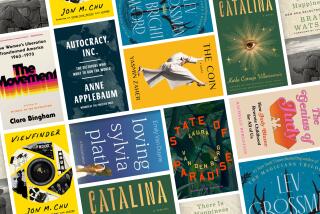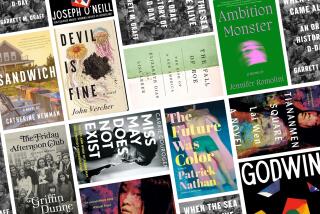Discoveries
A Day in the Life of a Smiling Woman
Complete Short Stories
Margaret Drabble
Houghton Mifflin Harcourt: 215 pp., $24
Written over a period of 50 years, these stories reveal a great deal about a writer best known for her novels. Organized chronologically by publication year, from 1964 to 2000, the 14 stories describe (clearly without Margaret Drabble’s intention to do so) three phases of a woman’s life: youth, middle age and old age. In the first few stories, like “Les Liaisons Dangereuses” (written when the author was at Cambridge, but not published until 1968 after her reputation was established), we see young characters on the outside of social situations looking in — a position every writer must establish early in his or her writing life. We see Drabble honing her powerful eye for details and their meanings. A narrator regards a newlywed couple on their honeymoon in “Hassan’s Tower” with painstaking attention — every decision, every pause, every trace of emptiness.
In “A Pyrrhic Victory,” the smallest gesture reveals gross flaws in a young girl’s character, flaws she seems destined never to outgrow. In the midlife stories, the best example is perhaps the collection’s title story, in which a working wife and mother, a model of compassion and intelligence, full of sublimated fury, begins to bleed to death while giving a speech at a local school. Barely concealed rage continues into later life — in “The Merry Widow” the protagonist does not even try to conceal her delight at her husband’s death, her sense of victory over the Grim Reaper. An old man working in the field outside the house she has rented on holiday infuriates her by interrupting her solitude. The characters in these stories exist in service of ideas; they topple too easily, defeated by Drabble’s certainty about the world. This may be why she is better known for her novels.
Bullfighting
Stories
Roddy Doyle
Viking: 214 pp., $25.95
Roddy Doyle has written novels, screenplays and short stories. He is well-loved for his dry humor which, in this story collection, seems more often to ignite doubt and light the path to despair than in the novels. Happiness is the theme of many of the 13 stories, the best kind of happiness, happiness with everyday life. In the title story, the narrator’s greatest joy has been in raising his four sons. As they leave home one by one, a great chasm opens up in his life. On holiday and drinking with the lads, he finds himself at a bullfight and watches as the bull is set on fire. Doyle never tells a reader what to think and so preserves the sense of wonder and interpretation that is pure oxygen to the story form. Like his fellow countryman James Joyce, he follows his characters down streets and through thoughts, stalking happiness, struggling to look forward, held back by strange memories and insisting on simplicity and the beauty, the delicious luxury of routine.
Teach Us to Sit Still
A Skeptic’s Search for Health and Healing
Tim Parks
Rodale: 335 pp., $25.99
It would be irritating to watch Tim Parks discover that the mind and the body are hopelessly entwined if he were not already so irritated with himself. His vast neuroses are slightly comical, but his pain and discomfort are real. Or are they? On a trip to India, Parks, who grew up in England but lives in Italy with his family, consults an ayurvedic doctor about his prostate condition. For years he has gotten unhelpful advice from Western doctors. The Indian doctor tells him that there is a “tussle” in his soul that will cause him pain if he does not address and dissolve it. He is given breathing exercises and reads the first self-help book he ever purchased, “A Headache in the Pelvis” by Drs. Wise and Anderson. “Every illness is a narrative,” he writes in the book’s beginning, “What matters is the version you tell yourself.” A lifelong academic and skeptic, the author of 21 books (fiction and nonfiction), Parks has a hard time getting his mind out of the way so he can listen to his body. This book represents a departure from the version of the story of his illness that he told himself for so many years. It is the version of the story that includes Parks’ own ability to heal himself.
Salter Reynolds is a Los Angeles writer.
More to Read
Sign up for our Book Club newsletter
Get the latest news, events and more from the Los Angeles Times Book Club, and help us get L.A. reading and talking.
You may occasionally receive promotional content from the Los Angeles Times.







